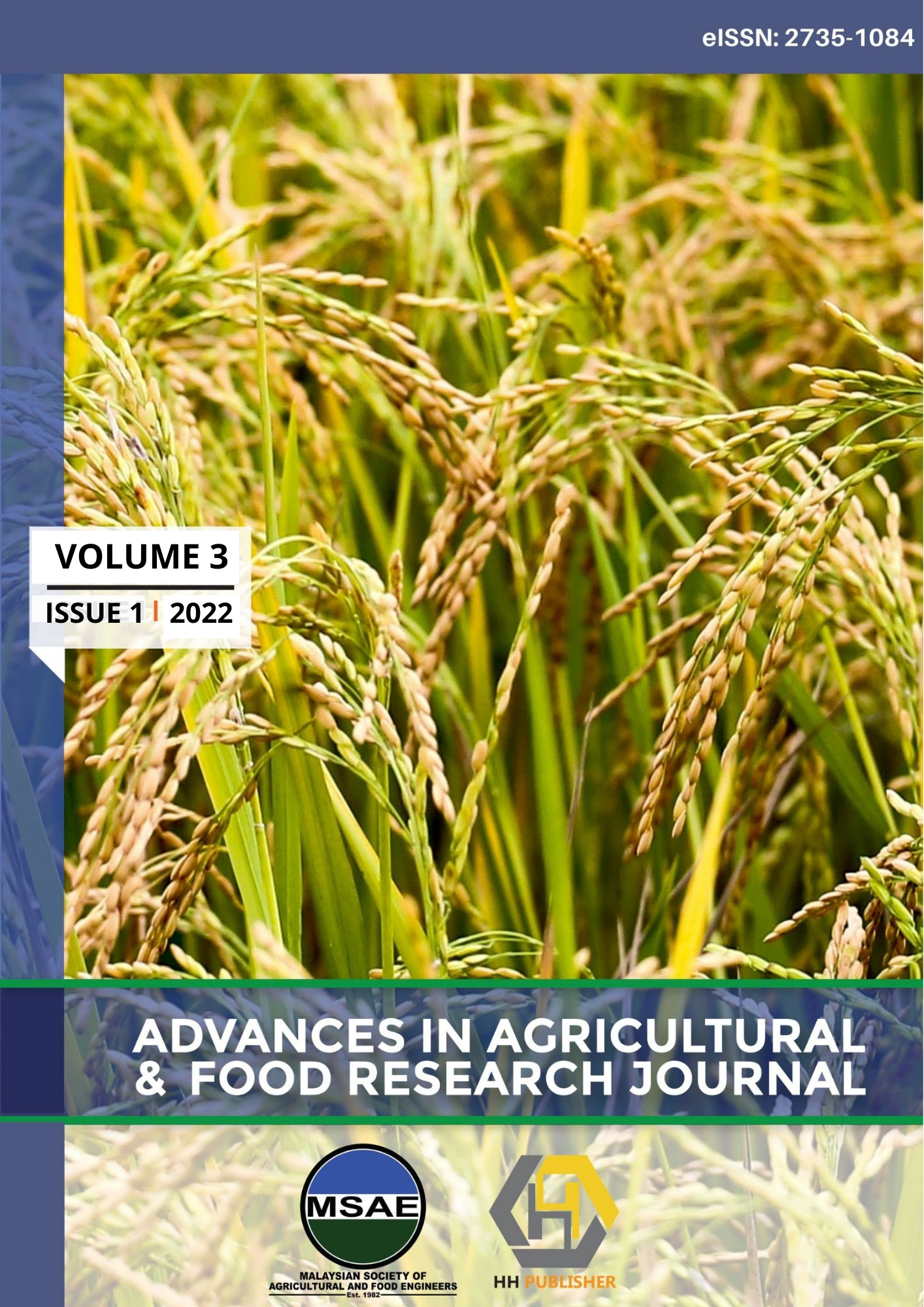Evaluation of Light Trap System in Monitoring of Rice Pests, Brown Planthopper (Nilaparvata lugens)
DOI:
https://doi.org/10.36877/aafrj.a0000187Abstract
Brown Planthopper (Nilaparvata lugens) is a major rice pest insect in Malaysia. Series of the outbreak has been recorded in 1991, 1909, 2011, and 2015 which caused heavy yield losses. The light trap is now commonly used to monitor the pest population to predict the outbreak. The population sampling was conducted based on the crop stage at a specific sampling point and area. It has been done manually through field observations using netting, sweeping, board tapping, or survey patrol. Those methods are laborious and time-consuming. Malaysia Agriculture Research and Development Institute (MARDI) has developed an early warning system for brown planthopper monitoring consisting of modular light traps and a weather database to provide earlier forecasts and more effective outbreak prediction. However, there is not much information about how effective the light trap operated in the open field to draw and trap the insects. The light trap's efficiency depends on a few factors like the trap design, type of light source, duration, and sampling time; all affect the trap's effectiveness. A 30W Compact fluorescence light (CFL) has been selected and used to build four operated light traps and placed at the appropriate selected location. Sampling works were conducted twice a week for three hours per night throughout the planting season (15 weeks). Comparative statistical analysis was conducted to evaluate the effectiveness of the light trap compared to the aerial netting method. The results showed that the difference is statistically significant between light trap and aerial netting with a value of 0.0167 at p <0.05. Therefore, brown planthopper population monitoring is more effectively done using the new design light trap.
Downloads
Published
How to Cite
Issue
Section
License
Copyright (c) 2021 mohammad aufa mhd bookeri, mohd fitri masaruddin, nuraini ahmad arif shah, arina mohd noh, nurul syakira samsuri, badril hisham abu bakar, mohd khusairy khadzir

This work is licensed under a Creative Commons Attribution-NonCommercial 4.0 International License.
Author(s) shall retain the copyright of their work and grant the Journal/Publisher right for the first publication with the work simultaneously licensed under:
Creative Commons Attribution-NonCommercial 4.0 International (CC BY-NC 4.0). This license allows for the copying, distribution and transmission of the work, provided the correct attribution of the original creator is stated. Adaptation and remixing are also permitted.

This broad license intends to facilitate free access to, as well as the unrestricted reuse of, original works of all types for non-commercial purposes.
The author(s) permits HH Publisher to publish this article that has not been submitted elsewhere.

.png)

.jpg)



